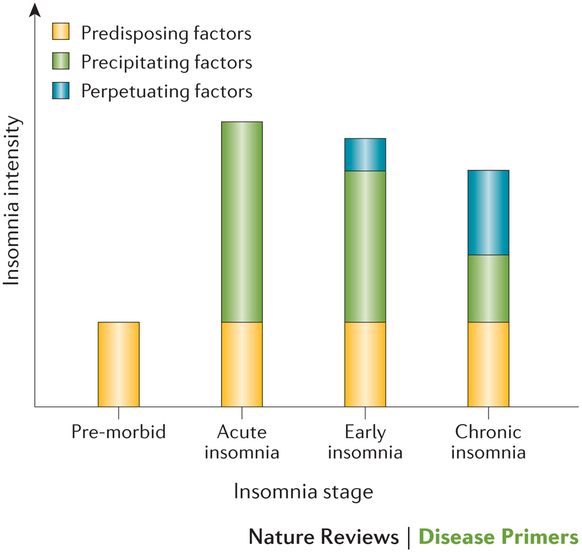不眠障害
Insomnia disorder
2015年9月3日 Nature Reviews Disease Primers Article number: 15026 (2015) doi: 10.1038/nrdp.2015.26

不眠障害集団のほとんどは、不眠状況、その再発または慢性化に侵される。この障害は、実臨床で最もよくある愁訴であり、睡眠の量または質への不満、入眠障害または中途覚醒を主な特徴とし、大きな苦痛と日中の機能障害を伴う。不眠障害は、多くの場合、疼痛やうつ状態などの他の内科的障害または精神障害と同時に発症するが、これらの中で不眠障害が最も主体となる愁訴として現れる場合がある。持続性不眠は、生活の質の低下および身体的・心理的負担などの長期的な有害健康転帰と関連している。有病率が高く、疾病負担が重いにも関わらず、不眠の原因と病態生理についてはほとんど理解されていない。この十年間に、疾病分類と診断のパラダイムが大きく変化したことによって、単に症状に基づく概念化から、不眠自体を1つの障害として捉える動きが台頭してきた。これらの変化に伴って、遺伝的、薬理学的および心理学的介入による治療法は大きな進展を遂げてきた。現在、これらの治療法は、睡眠特異的および不眠特異的治療標的に対するアプローチに置換されることが増えている。心理学的および薬理学的治療によって、入眠までの時間および入眠後の覚醒時間が効果的に短縮され、総睡眠時間がわずかに増加した;これらの転帰は日中の機能改善と関連があった。このような進展があったものの、不眠の発症機構に関する知識の改善、ならびに経済性、有効性、利便性がより高い治療法の開発の必要性などの諸問題が残されている。
PrimeView
不眠障害のある患者には、入眠困難、中途覚醒または早期覚醒などの睡眠困難が見られる。これらの問題は患者の日中の機能発現に影響する。このPrimeViewでは、実施可能な不眠の治療法が明示されている。
本Primerの図解サマリー

